Delaware Bay is an outlet of the Delaware River in the U.S. Northeast. With the Bay’s fresh water mixing for many miles with the salt water of the Atlantic Ocean, it’s one of the most important habitats for shorebirds in the world. EarthSky’s Shireen Gonzaga visited Delaware Bay in May 2024 at the height of spring migration. She said many birds fly here from along the Atlantic coastline, stopping to feed and rest before making their way to their breeding grounds in the Arctic. See Shireen’s video of shorebirds in Delaware Bay, above.
Shorebirds need a variety of habitats
Most shorebird species are highly migratory. In the Americas, they journey northward in spring, rushing to breeding grounds in the Canadian Arctic tundra. That’s a mostly treeless habitat with low-growing vegetation like grasses and mosses. There, they raise their chicks in early summer.
Shorebirds head south starting in mid-summer, this time at a slower pace. First, the adults leave, followed by juveniles in late summer. Many spend the Northern Hemisphere fall and winter months over a wide geographic range, from the southern U.S. all the way to the tip of South America.
During migration and at their wintering sites, shorebirds forage in a variety of habitats. You’ll see them feeding on invertebrates, like worms on tidal mudflats and insects in shallow freshwater marshlands. Or you may see them on a beach, plucking prey like small crustaceans from the sand.

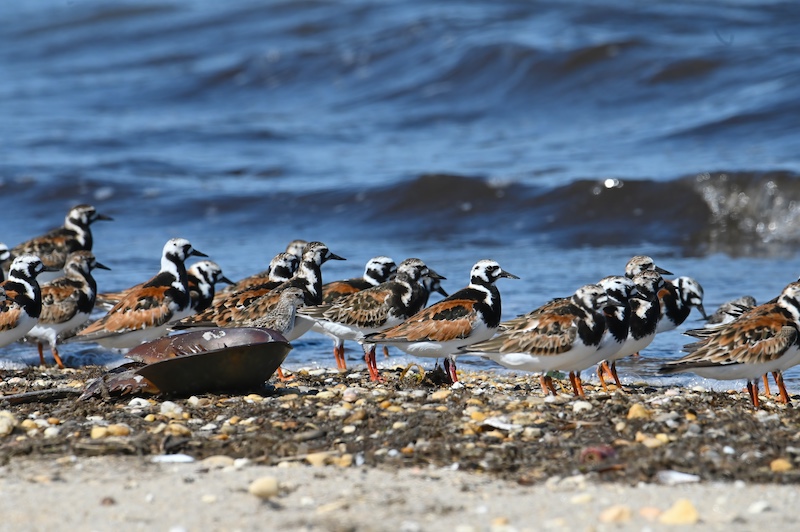
Horseshoe crab eggs are a valuable food source
Why do the birds stop in Delaware Bay? It’s partly because Delaware Bay hosts the largest population of breeding horseshoe crabs in the world. In May and June, these marine arthropods spawn on the beaches during spring tides. Many of their little green eggs end up on the beach surface, a bounty to ravenous shorebirds.
Ruddy turnstones and red knots rely heavily on the eggs of horseshoe crabs. That’s because these eggs are rich in proteins and fats, essential for building muscle and fat reserves needed for long-distance migrations.
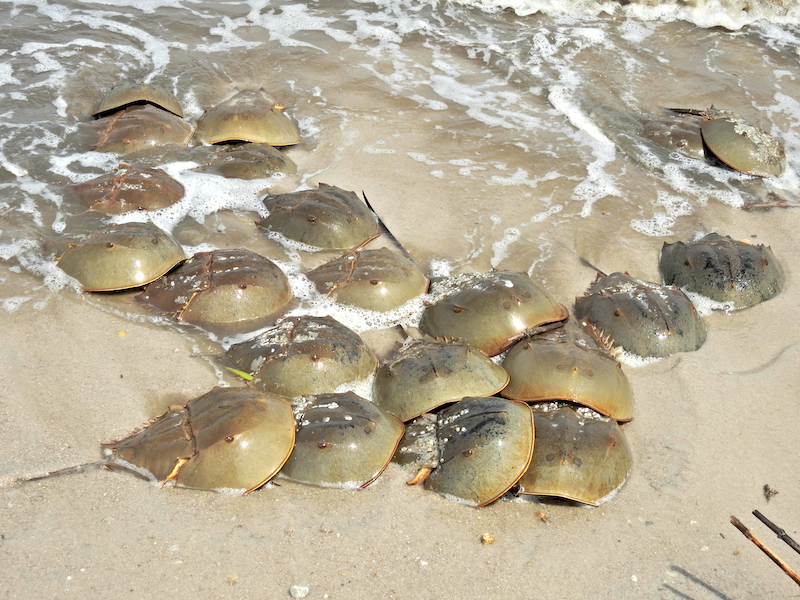
Delaware Bay is a critical stop for red knots
Red knots are robin-sized shorebirds. Many of them undertake epic migrations. Some red knot populations live as far south as Tierra del Fuego, at the tip of South America, about 10,000 km (approximately 6,000 miles) from Delaware. Other populations winter on the coasts of Brazil and the southern U.S.
A significant number of red knots stop at Delaware Bay on their way to Arctic tundra breeding grounds in Canada, as far as 3,000 km away (about 2,000 miles). These long-distance migrants arrive at Delaware Bay beaches around early May. They’re emaciated when they get there, having drained fat reserves accumulated at their previous foraging site.
Red knots spend about two to three weeks at Delaware Bay beaches, largely gorging on horseshoe crab eggs. When they arrive, the birds weigh about 100 grams (3.5 oz). By the time they leave, they have doubled in weight, in fat that will fuel their northward migration.
The red knot subspecies (Calidris canutus rufa) found in the Americas is classified as threatened under the Endangered Species Act. Their numbers have plummeted in the past few decades, about 70% since the 1980s.
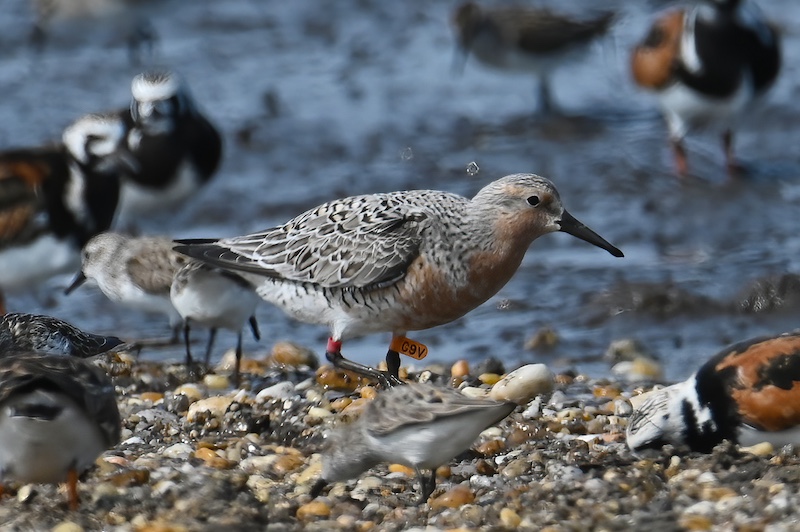
Shorebirds in decline
Migration is very physically demanding. Shorebirds need places where they can feed and rest undisturbed, to recuperate and build up fat reserves that fuel the next leg of their journeys.
Places for them to feed and rest have dwindled. Climate change also affects these birds. As a result, shorebird populations are in decline.
The Western Hemisphere Shorebird Research Network (WHSRN) said on their website:
Shorebirds are among a few groups of birds showing the most dramatic declines. Species that undertake hemispheric migrations rely on specific habitats and food sources to survive, but these resources are increasingly under threat from human disturbance, habitat loss and degradation, over-harvesting, increasing predation, and climate change.
The organization also wrote:
Climate change is happening now. With shorebirds’ reliance on coastal wetlands, the Arctic tundra, saline lakes in arid regions, and highly specified food resources during migration, they are extremely vulnerable to the changes that are occurring, such as:
– Loss of habitat due to rising tides
– Hotter and drier conditions in some regions
– Shrub encroachment on nesting habitat in a warming Arctic
– Mismatched timing of migration and food resources
At Delaware Bay, shorebirds that rely on horseshoe crab eggs face an additional problem: a scarcity of eggs. Horseshoe crabs have been heavily harvested for use as bait in eel and conch fisheries. As a result, fewer eggs are available on the beach for birds. Despite harvesting restrictions, horseshoe crab numbers remain at historic lows.
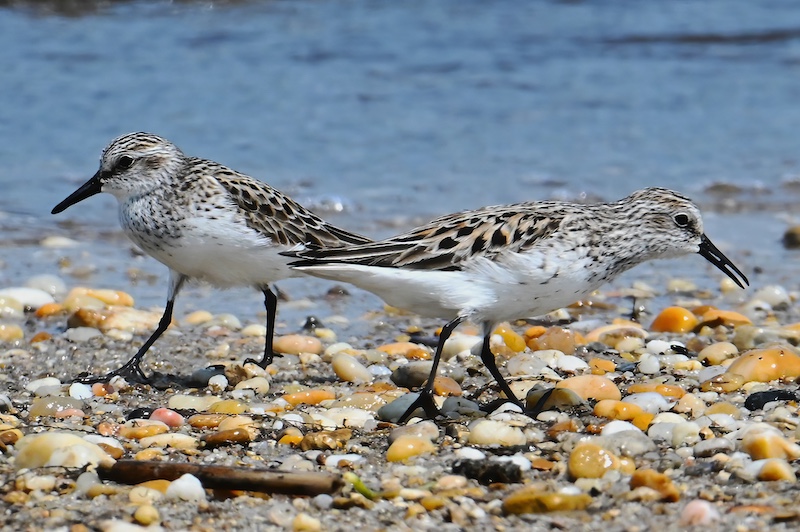
State and federal wildlife agencies are monitoring shorebird populations closely in Delaware Bay. They have provided habitat by preserving critical areas where the birds can feed and rest undisturbed. In recent years, there have been some steps to reduce harvesting of horseshoe crabs. But will these steps be enough to help the shorebirds? Time will tell.
Where to see shorebirds in Delaware Bay
For spring shorebird migration, May is the best time to visit the Delaware Bay area. If you’re new to shorebirds, it’s best to join a birding field trip so a guide can help you identify the birds. Bring a pair of binoculars and, if you have one, a spotting scope.
Some beaches in New Jersey have designated viewing areas where you can watch the birds. On the Delaware side, Bombay Hook National Wildlife Refuge is an excellent place to view shorebirds in wetland habitats. For beach shorebirds, a good place to start is the Dupont Nature Center near Slaughter Beach.
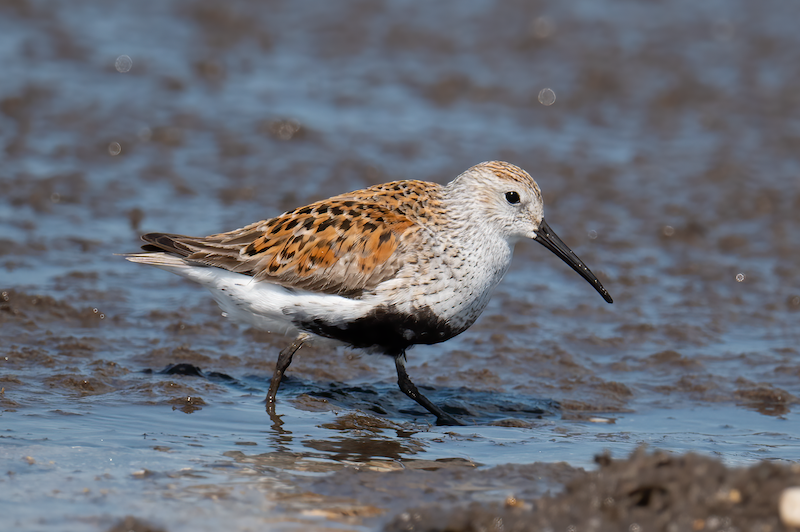
Bottom line: The Delaware Bay coastal region is one of the most important shorebird habitats in the world. In spring, some shorebirds rely heavily on the eggs of horseshoe crabs to fuel their northward migration.











